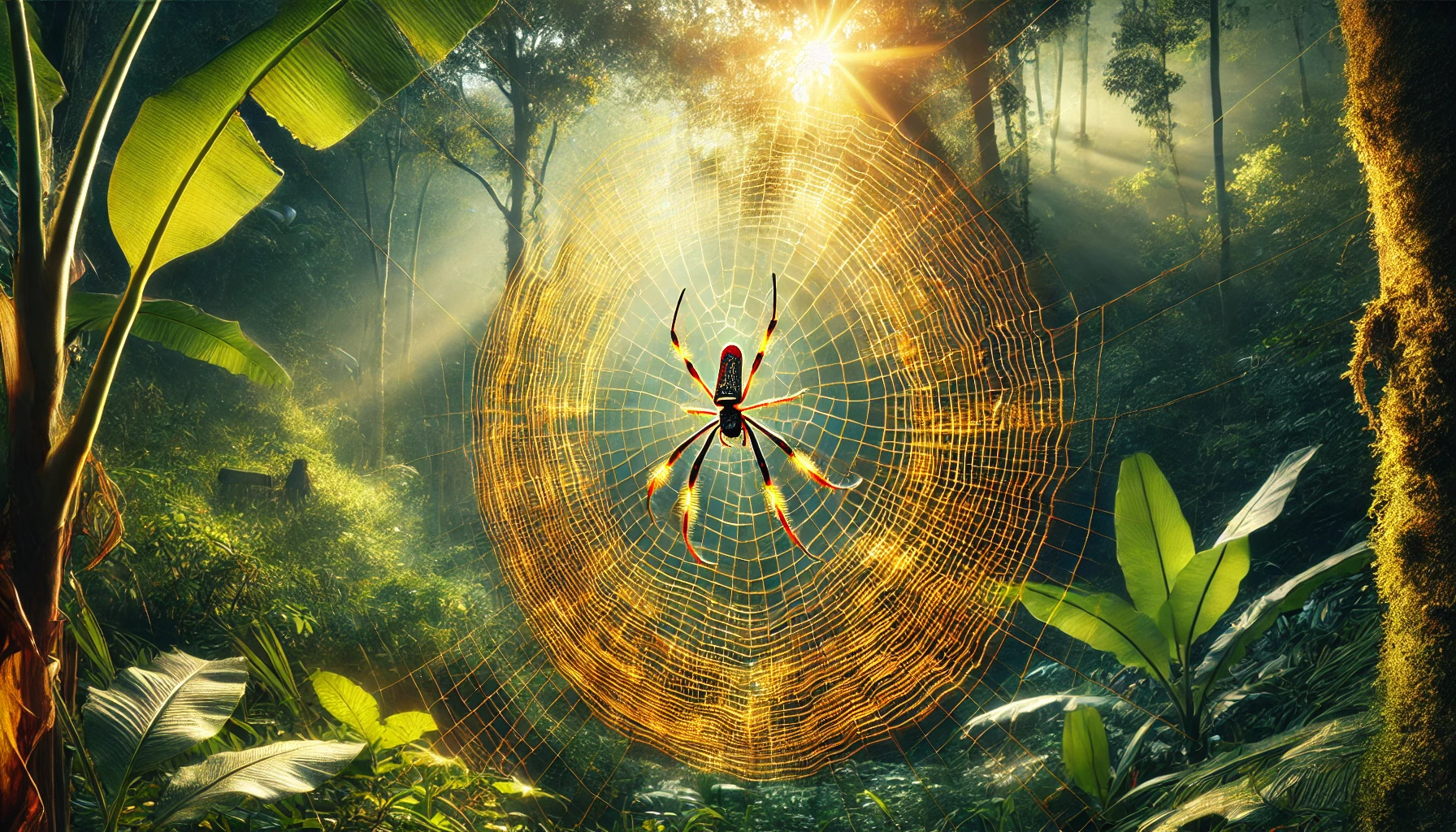The banana spider is a fascinating creature admired for its vibrant appearance and intricate web designs. Known scientifically as the golden orb-weaver, this spider species plays a vital role in maintaining ecological balance while captivating nature enthusiasts with its beauty and behavior.
What Is a Banana Spider?
Several spider species, most notably the golden orb-weaver, are commonly referred to as banana spiders. These spiders earn their name from their striking yellow webs, which shimmer in sunlight and function both as traps for prey and protective barriers.
Although the term “banana spider” may also apply to other species in tropical regions, the golden orb-weaver remains the most widely recognized example.
Physical Characteristics of the Banana Spider
The banana spider is easily identified by its unique physical features.
Key Features:
- Size: Females are larger, reaching up to 3 inches in body length, while males are significantly smaller.
- Coloration: Females display bright yellow markings on their abdomen, complemented by long, slender legs.
- Webs: Their golden silk is not just beautiful but also exceptionally strong, comparable to steel in tensile strength.
Where Are Banana Spiders Found?
Banana spiders thrive in warm, humid environments, making them common in tropical and subtropical regions.
Typical Habitats:
- Forests and woodlands.
- Gardens and parks.
- Coastal areas and mangroves.
Their webs are often built in open spaces between trees, ensuring ample exposure to sunlight, which enhances the visibility of their golden silk.
The Role of Banana Spiders in the Ecosystem
Banana spiders play a crucial role in controlling insect populations. By preying on various flying insects, including mosquitoes and flies, they help maintain ecological balance.
Contributions to the Ecosystem:
- Reducing pest populations.
- Serving as prey for birds and larger predators.
- Providing silk used by researchers for its strength and elasticity.
What Do Banana Spiders Eat?
The diet of banana spiders consists mainly of insects. Their webs are designed to capture flying prey, which is then immobilized by their silk.
Common Prey:
- Mosquitoes.
- Moths.
- Grasshoppers.
- Bees and small wasps.
Once prey is caught, the spider injects it with venom to paralyze and liquefy it for consumption.
Are Banana Spiders Dangerous?
Banana spiders are not considered dangerous to humans. Their venom is primarily designed to subdue small insects and is not potent enough to cause serious harm to humans. However, bites can cause mild symptoms such as redness, itching, or slight swelling in rare cases.
What to Do If Bitten:
- Wash the area with soap and water.
- Apply an ice pack to reduce swelling.
- Seek medical attention if allergic reactions occur.
How Do Banana Spiders Build Their Webs?
The web-building process of banana spiders is a marvel of nature. Their golden silk is spun in large, circular patterns, often spanning several feet.
Steps in Web Construction:
- Anchor Lines: The spider creates a framework by attaching silk to sturdy surfaces.
- Spiral Threads: A temporary spiral is built to guide the construction of the final web.
- Sticky Silk: The spider spins sticky threads in a spiral pattern, designed to trap prey effectively.
Fascinating Facts About Banana Spiders
Banana spiders exhibit several behaviors and traits that make them stand out among arachnids.
Interesting Facts:
- Their silk reflects ultraviolet light, attracting insects.
- Some species of banana spiders are known to recycle their webs by consuming old silk.
- Female spiders are significantly larger and more colorful than males, making them easy to spot.
Threats to Banana Spiders
Despite their resilience, banana spiders face several threats that impact their survival.
Major Threats:
- Habitat Loss: Deforestation and urbanization reduce their natural habitats.
- Predators: Birds, lizards, and even humans can pose threats.
- Climate Change: Altered weather patterns can disrupt their breeding and feeding habits.
How to Identify a Banana Spider
Identifying a banana spider involves observing its physical and behavioral traits.
Key Identification Tips:
- Look for golden, orb-shaped webs in sunny, open areas.
- Note the size difference between females and males.
- Observe their distinctive yellow and black body markings.
Benefits of Banana Spiders in Gardens
Gardeners often appreciate the presence of banana spiders due to their natural pest control abilities.
Advantages of Having Banana Spiders in Your Garden:
- Reduced reliance on chemical pesticides.
- Control of harmful insect populations.
- Contribution to biodiversity and garden health.
How to Coexist with Banana Spiders
While some may find their presence intimidating, banana spiders are harmless and beneficial.
Tips for Peaceful Coexistence:
- Avoid disturbing their webs.
- Encourage their presence by maintaining natural vegetation.
- Educate others about their ecological importance.
Conclusion
The banana spider is a remarkable creature that contributes immensely to ecological health. Its golden web, efficient hunting techniques, and harmless nature make it a wonder of the natural world. By understanding and appreciating these spiders, we can foster greater coexistence and ensure their continued role in maintaining biodiversity.
FAQs
What is the lifespan of a banana spider?
Banana spiders typically live for about a year, with females often outliving males.
Are banana spiders found in urban areas?
They prefer natural habitats but occasionally appear in gardens and parks within urban settings.
Do banana spiders produce silk stronger than steel?
Yes, their silk is incredibly strong and has been compared to steel in tensile strength.
Can banana spider webs trap large insects?
Yes, their webs are designed to capture large flying insects like moths and grasshoppers.
Are banana spiders active during the day or night?
Banana spiders are mostly active during the day, often seen tending to their webs in sunlight.
What should I do if I see a banana spider in my home?
Gently relocate it outside using a stick or container, as it is beneficial to the environment.



